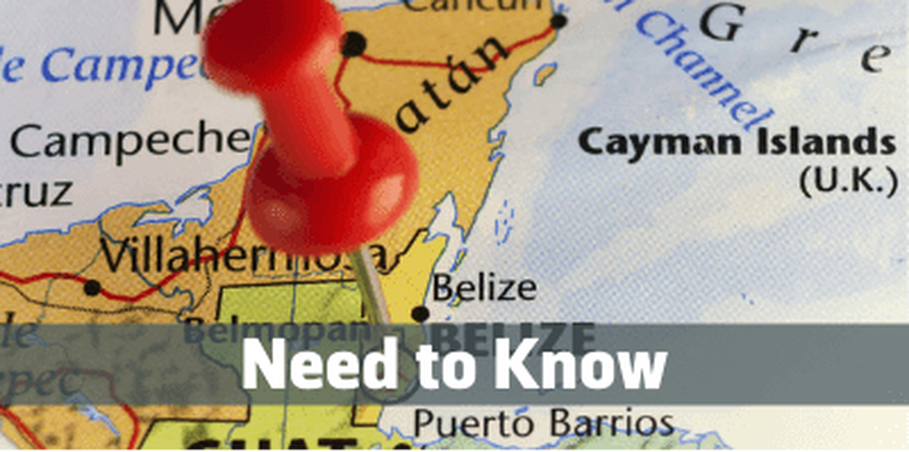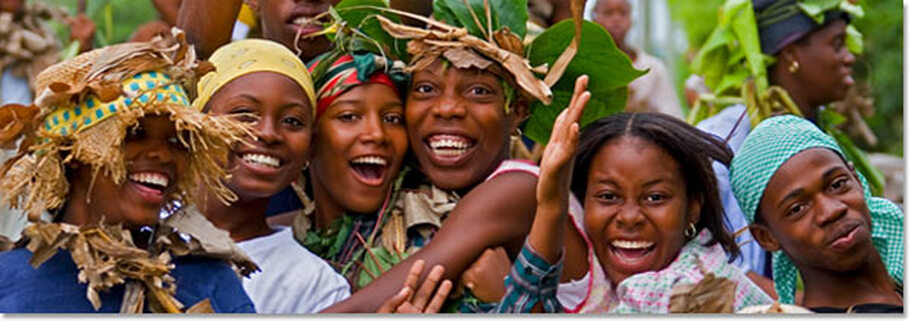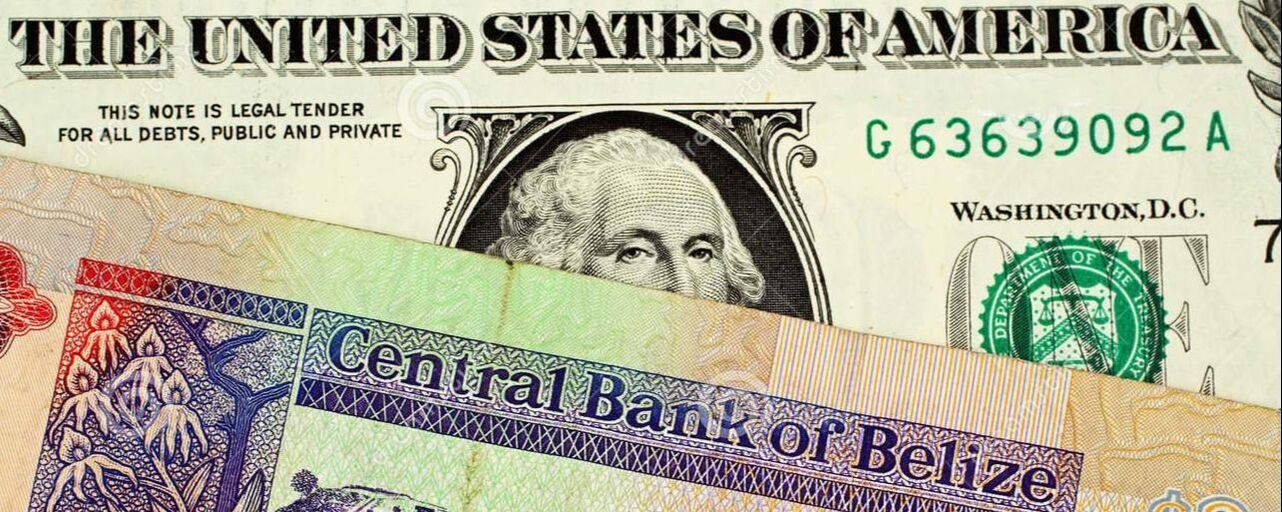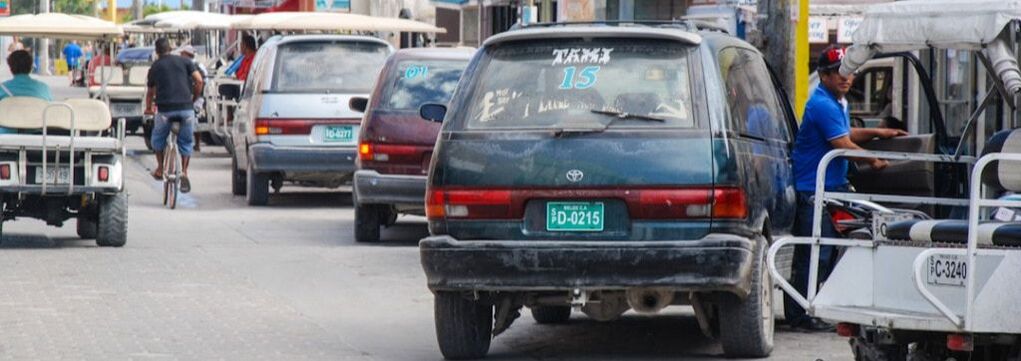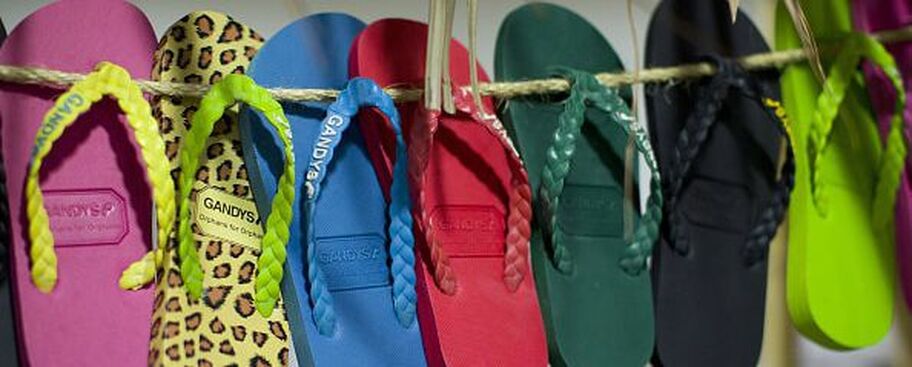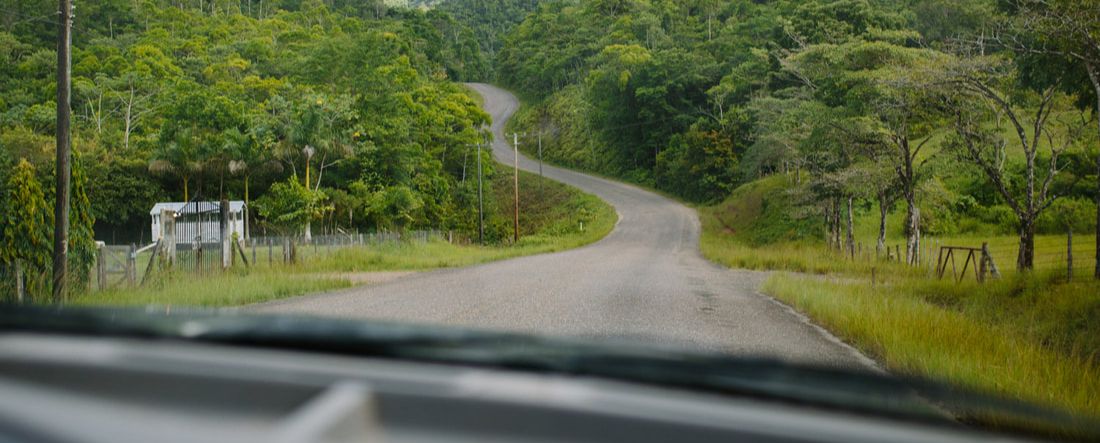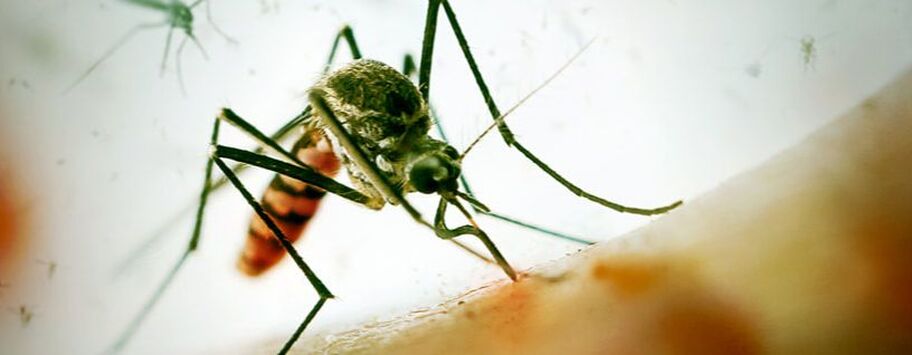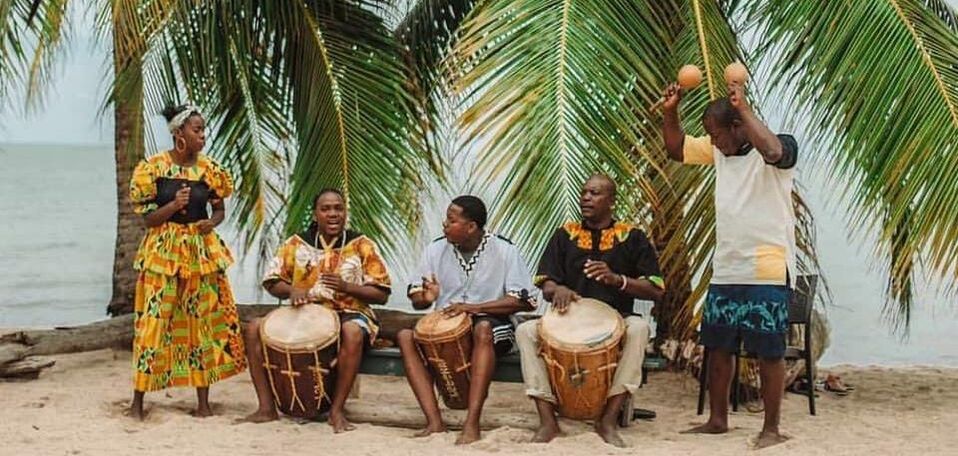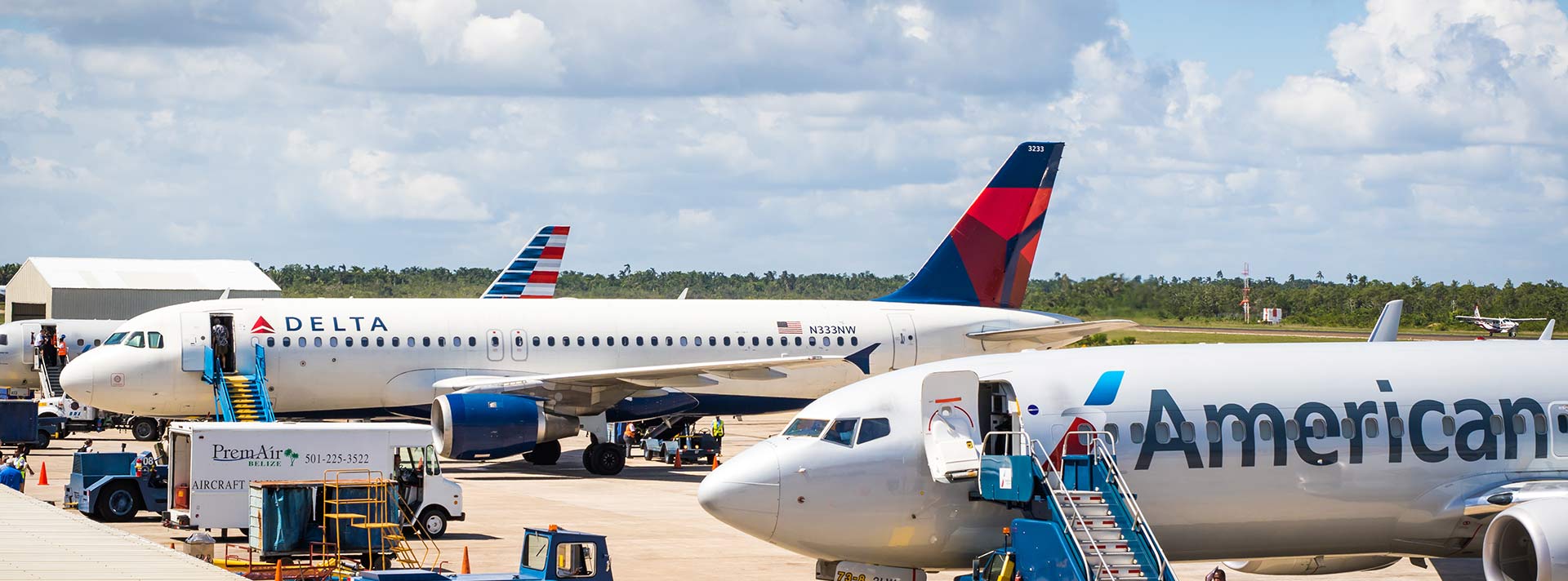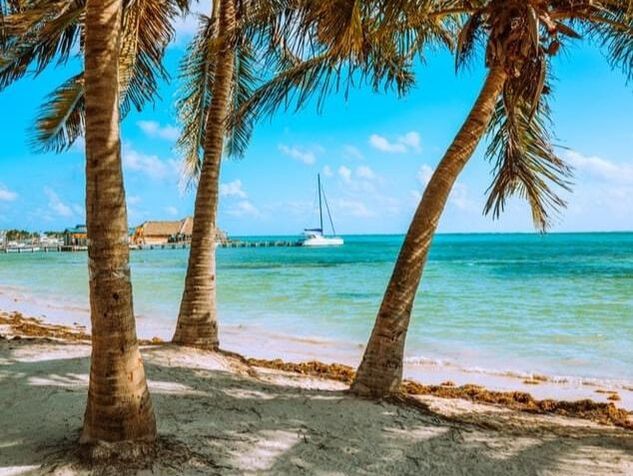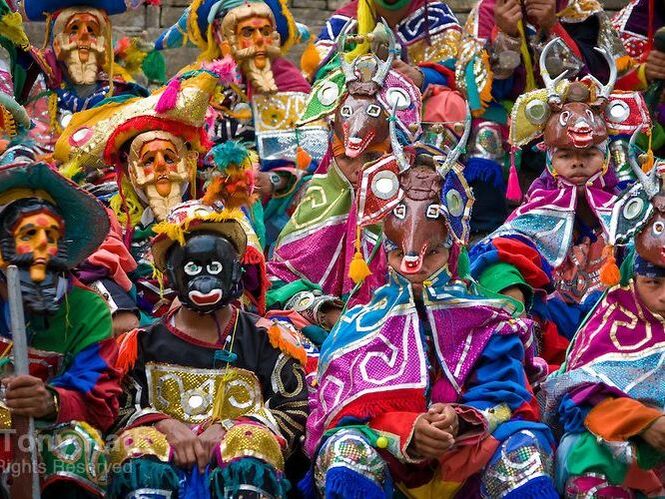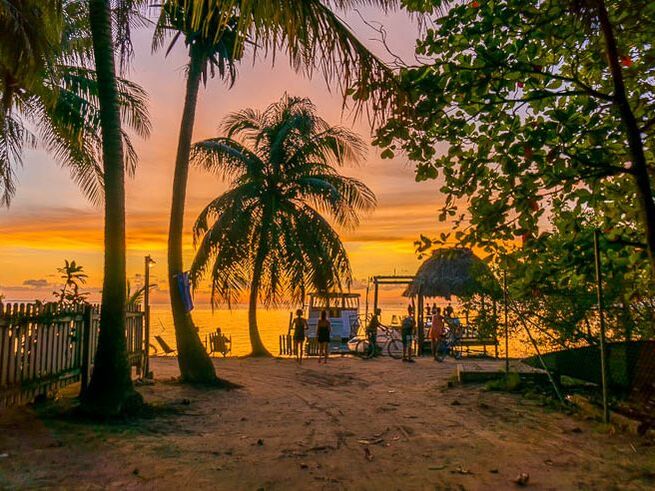Traveling to Belize
Things You Need To Know Before Coming to Belize
Belize is a wonderful destination to vacation in. It's relatively the same size as Massachusetts or Rhode Island in the United States of America. The populations is a little over 397,628 (as of 2020), and has one of the most diverse natural habitats found on earth. Few spots can compare to this gorgeous tropical landscape, complete with an enormous coral reef system located right offshore. On land, the Belizean countryside is dotted with ruins of ancient Mayan cities, which have become lost in a vast tropical rainforest jungle. The people of Belize are a melting pot of various ethnic cultures (who have all come together), over the years to call this place home.
For many years, Belize was virtually unknown to many western travelers. But today, Belize is becoming an increasingly popular vacation spot and has become well known for its luxurious jungle lodges, ocean side resorts, budget hotels and backpacking hostels. Located on the edge of the Caribbean Sea, Belize has hundreds of miles of gorgeous beaches, while inland rain forests and mountain slopes are home to large nature reserves. Over 450 small islands (known locally as “cayes”) and (3 of the 4) atolls (found in the Western Hemisphere) can be found within our borders.
The number one tourist destination for the entire country of Belize is Ambergris Caye, and that's were we come in. Belize Budget Suites is a small budget hotel located on Ambergris Caye (at a nightly price point), that allows many visitor's the ability to travel to Belize and go on all the adventures.
For many years, Belize was virtually unknown to many western travelers. But today, Belize is becoming an increasingly popular vacation spot and has become well known for its luxurious jungle lodges, ocean side resorts, budget hotels and backpacking hostels. Located on the edge of the Caribbean Sea, Belize has hundreds of miles of gorgeous beaches, while inland rain forests and mountain slopes are home to large nature reserves. Over 450 small islands (known locally as “cayes”) and (3 of the 4) atolls (found in the Western Hemisphere) can be found within our borders.
The number one tourist destination for the entire country of Belize is Ambergris Caye, and that's were we come in. Belize Budget Suites is a small budget hotel located on Ambergris Caye (at a nightly price point), that allows many visitor's the ability to travel to Belize and go on all the adventures.
Things You Need To Know Before Arriving
Belize is the vacation destination of a lifetime waiting to happen. It is incredibly beautiful and warmly welcoming. It comfortably close to home for Northern American visitors. It is surprisingly affordable and is sure to provide tons of fun for all members of the family but before booking your adventure vacation to the “Jewel” here’s what you need to know.
Language
LANGUAGE - The official language in Belize is English, which most of the population speaks. For the people who live here, many of them are bi-lingual, meaning they speak both English and Spanish. You will find some who speak Kriol, and Garifuna, Chinese and Lebanese.
Currency
CURRENCY - Cash is king in Belize. The Belizean Dollar is permanently pegged to the American dollar, making it very easy to convert prices. The local currency in Belize is known as the Belizean Dollar (BZD), but American dollars are accepted almost everywhere you go.
- The exchange rate from Belize dollars to USA dollars is 2 to 1.
- It has stayed this way for years, simply because its easy for most people to convert.
- US dollars are widely accepted, so there is no need to worry about exchanging money when you get here. I personally don't know of anyone who has turned down a US dollar.
- Having cash on hand is encourage, since ATM's are few and most businesses charge a 5 percent (surcharge) for using a credit card. Also keep in mind, that some of the smaller (local) businesses may use credit cards.
- Credit cards are widely accepted (in the more popular spots). The two cards which are most widely accepted are Master Card & Visa.
Drinking Water
DRINKING WATER - The water is potable in Belize, but we don't recommend drinking it. Bottled water is widely sold throughout Belize. You can find anything from schilling waters, to bottled water in (8 oz. & 32 oz.) containers. Bottle water can also be purchased in one & five gallon containers as well.
Electricity
ELECTRICITY - The entire country of Belize operates off a 110 voltage system, similar to the United States. So there is no need to worry about bringing special adapters for cell phone chargers, laptops, blow dryers, hot rollers, cameras, etc.
Taxi's & Cab Fares
TAXI'S & CAB FARES - By government regulation, all taxi driver's must have a green license plate. Never accept a taxi ride for a vehicle that does not have a green plate. Before getting into your taxi, be sure to state your destination and ask how much the fare will be. This is your best defense to prevent being overcharged. Prior to exiting the taxi, be sure to ask for the driver's telephone number and/or business card. It maybe after departing your taxi, that you realize someone in your group accidentally left something in the vehicle, with a name and telephone number you just increased your chances of getting it back.
Casual Dress Code
CASUAL DRESS CODE - This island operates on island time (which means), you can get into any restaurant or establishment simply by wearing light cotton clothing and flip flops. The dress code in Belize, even for most formal events, is casual. Tropical attire, Bermuda shorts, cotton pants/tops, sandals make great choices when coming to Belize. Avoid bringing anything 100% polyester.
Belizean Cuisines & Food
Cuisine Selections & Food - Due to its abundant coastline, you'll find many restaurants serve up their favorite version or snapper, grouper, snook and barracuda. Many restaurants offer a Caribbean-Latino cuisine, which many tourists find appealing. If you're looking to keep your expenses down as regards eating out, go to where the locals go to eat. You'll not only find the prices cheaper, but the food is just as delicious. Belizeans typically eat stewed chicken, fried fish, beans & rice, potato salad, conch, chimole, and shrimp ceviche, to name a few. You'll find lots of fresh fruits & vegetables sold at local road-side stands. For the adventurous souls, check out some of the seasonal local fruits, typically not sold in the North American grocery stores. The individuals who are vegetarians, simply order many of your favorite menu selections without the meat.
Gratuities & Tipping
Gratuities & Tipping - Tipping is not mandatory but is encouraged. People customarily tip between 10-20%, depending on the service. Keep in mind, when paying at some resorts & hotel restaurants, they may charge an additional 10% as service charge. If you tip on top of this (say 15%), then in reality you are leaving a 25% tip. So check your bill out before calculating your tip.
Tour guides are generally are tipped 15% off the rate per person for your tour. There is no need to tip taxi drivers, there fare is inclusive, and they are not expecting you to tip them.
Tour guides are generally are tipped 15% off the rate per person for your tour. There is no need to tip taxi drivers, there fare is inclusive, and they are not expecting you to tip them.
- Who in Belize expects a tip - Most Belizeans who offer tourists a service, whether it be handling hotel or airport luggage, restaurants, bartenders and tour guides. This has been an industry standard for years. These people are often paid less per hour, because they do receive tips as their main source of income. This practice was started years ago, to give the service provider an incentive for offering great service. Bear in mind, that many Belizeans support their family on their tip income. So be kind, be generous and reward good service when you receive it.
- Who in Belize doesn’t expect a tip - Belizean taxi drivers, street-food sellers, and art and craft vendors don’t expect a tip. Contrary to the USA or Canada, taxi drivers work for themselves and make a decent living. Be sure to collect business cards and telephone numbers. Chances are, you'll need a taxi more than once while you're in Belize.
- How much to tip in Belize - Typically, tourists in Belize tip 10% to 20% on average, with 20% being for exceptional service.
- Do I have to tip in Belize - Tipping is not mandatory in Belize, it's just considered the right thing to do. Tipping is how many families in Belize support themselves.
- Best way to tip in Belize - Cash tips are always preferred, but if you can tip with a credit card as well. Cash tips are better, because credit card companies typically charge a fee for their service, which gets passed on down to the employee. Some hotel and restaurant do not pass on the entire tip to their staff, so if you want to make sure someone gets rewarded for good service, give them a cash tip.
Crime in Belize
CRIME - Tourism forms the biggest part of the local economy, and most tourist spots are very safe. Nonetheless, it is wise to always be vigilant against petty thefts and pickpocketing. Organized crime has gained a foothold in this otherwise laid-back country, particularly strong in Belize City, where violent crime has recently seen an upsurge. When traveling to Belize, it is recommended that you stay in groups, monitor your belongings at all times, and always carry a copy of your passport with you. One word of caution, do not bring locals you have just met back to your room. This sets up a perfect opportunity for you to be robbed, so do your drinking away and partying away from your room.
Driving Within Belize
DRIVING WITHIN BELIZE - Visitors can legally drive in Belize with an international driver’s license and a passport. Be sure to have your drivers license and a copy of your passport on you at all times, Belize is know for the random check-points.
Bugs & Critters
BUGS & CRITTERS - There are plenty of bugs & insects in Belize, bring some bug spray with you in your packed luggage, as stores tend to charge a premium for these items. You'll want to keep this spray handy when going out - whether to the beach or in the jungle. If you find yourself with a number of red dots on your legs, these are from "no-see-ums". They are a tiny little sand flea, hardly seen with the naked eye. Simply rub your legs down with baby oil, and enjoy the beach. What your doing, is turning your leg into a human fly strip. The oil prevents them from biting you, and places a layer of protections between your skin and the bug.
Sunscreen & Skin Protection
SUNSCREEN - Belize is fairly close to the equator, so temperatures can be a bit hot at time and since most of our days are sunny with a few clouds rolling by, sunscreen is necessary. Bring an extra bottle or two with you in your packed luggage, as stores tend to charge a premium for these items.
Belize Culture & Customs
Culture and Customs in Belize - The largest ethnic group in the country are known as Mestizos (Spanish for “mixed”), descended from European and Mayan ancestors. The second largest population group are the Creoles, forming about a quarter of the population, descended from peoples originally from other locations in the Caribbean. Other ethnic groups in Belize include the descendants of the Maya, including peoples of the Yucatec, Mopan, and Ketchi tribes. Also present are the Garifuna, who arrived in Belize just over 100 years ago, a mix of African emigrants who escaped persecuting in nearby Caribbean islands. Other ethnic groups found in Belize include British, German, East Indian, Spanish, and people of Mexican descent.
Departure Tax
Departure Tax - There are no fees or costs (for individual people) to enter Belize, all foreign visitors must pay an exit tax when leaving the country. In some cases, this exit tax may be included in the price of your airfare or cruise. If not, the exit fee ranges from $20 to $57.50, the price depending on whether you fly out of Belize or leave via a land/maritime border. It's worth checking to see whether this has already been paid along with your airfare. If not, it is payable in cash at the International Airport. The total exit fee is US $55.50. There is also a $0.75 security fee for domestic security screening. When departing Belize through the Guatemala or Mexico border, the border fee to be paid on departure is US $20.00.
Additional Information - That's Good to Know
BELIZE & GUATEMALA BORDER DISPUTES
- It is locked in an age-old territorial dispute with Guatemala, which claims Belize as part of its territory.
- The countries are currently in que for their case to be heard by the International Court of Justice (ICJ).
- From time to time, tension can flare up between the two military forces. Keep an ear open as to border disputes if you're looking to go see the Tikal Mayan Ruins in Guatemala.
- There are no Visa requirements for citizens of the European Union, CARICOM, the US, Costa Rica, Chile, Guatemala, Iceland, Mexico, Norway, South Africa, Switzerland, Tunisia, Uruguay and Commonwealth territories.

